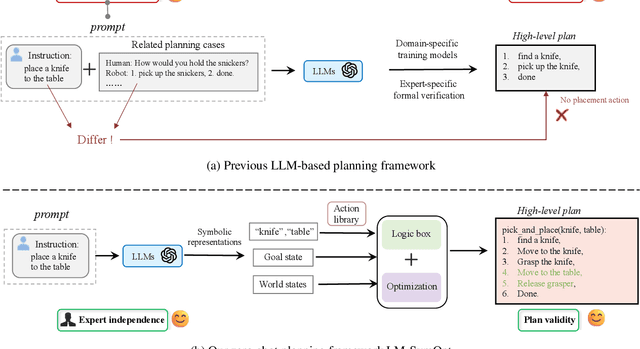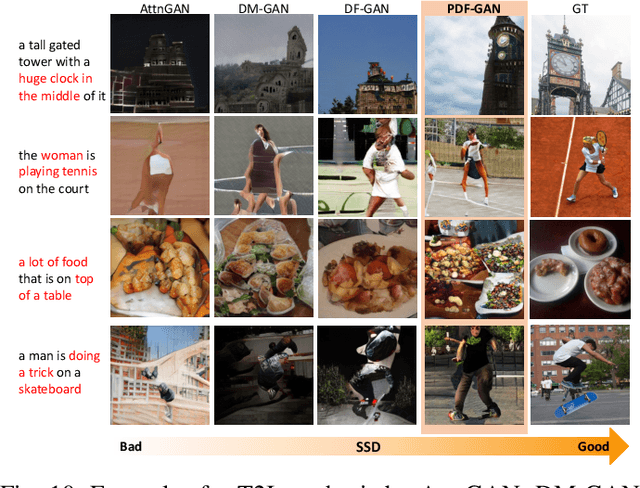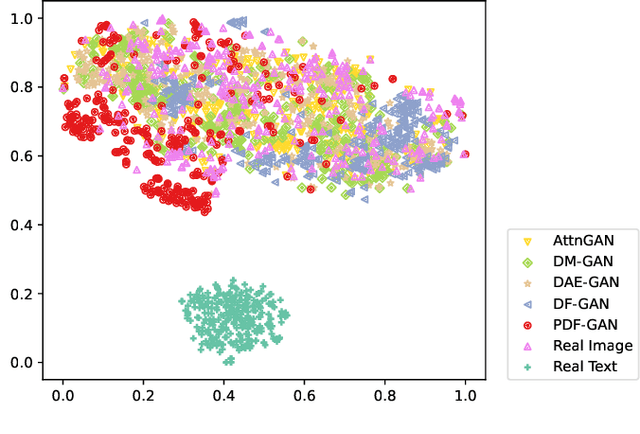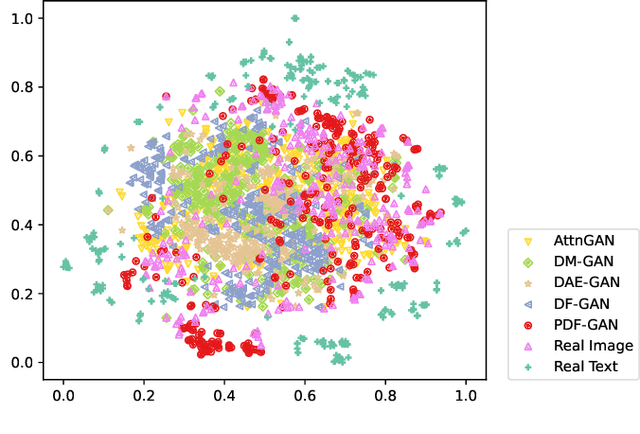Zihan Ye
Anyone Can Jailbreak: Prompt-Based Attacks on LLMs and T2Is
Jul 29, 2025Abstract:Despite significant advancements in alignment and content moderation, large language models (LLMs) and text-to-image (T2I) systems remain vulnerable to prompt-based attacks known as jailbreaks. Unlike traditional adversarial examples requiring expert knowledge, many of today's jailbreaks are low-effort, high-impact crafted by everyday users with nothing more than cleverly worded prompts. This paper presents a systems-style investigation into how non-experts reliably circumvent safety mechanisms through techniques such as multi-turn narrative escalation, lexical camouflage, implication chaining, fictional impersonation, and subtle semantic edits. We propose a unified taxonomy of prompt-level jailbreak strategies spanning both text-output and T2I models, grounded in empirical case studies across popular APIs. Our analysis reveals that every stage of the moderation pipeline, from input filtering to output validation, can be bypassed with accessible strategies. We conclude by highlighting the urgent need for context-aware defenses that reflect the ease with which these jailbreaks can be reproduced in real-world settings.
Reflections Unlock: Geometry-Aware Reflection Disentanglement in 3D Gaussian Splatting for Photorealistic Scenes Rendering
Jul 08, 2025Abstract:Accurately rendering scenes with reflective surfaces remains a significant challenge in novel view synthesis, as existing methods like Neural Radiance Fields (NeRF) and 3D Gaussian Splatting (3DGS) often misinterpret reflections as physical geometry, resulting in degraded reconstructions. Previous methods rely on incomplete and non-generalizable geometric constraints, leading to misalignment between the positions of Gaussian splats and the actual scene geometry. When dealing with real-world scenes containing complex geometry, the accumulation of Gaussians further exacerbates surface artifacts and results in blurred reconstructions. To address these limitations, in this work, we propose Ref-Unlock, a novel geometry-aware reflection modeling framework based on 3D Gaussian Splatting, which explicitly disentangles transmitted and reflected components to better capture complex reflections and enhance geometric consistency in real-world scenes. Our approach employs a dual-branch representation with high-order spherical harmonics to capture high-frequency reflective details, alongside a reflection removal module providing pseudo reflection-free supervision to guide clean decomposition. Additionally, we incorporate pseudo-depth maps and a geometry-aware bilateral smoothness constraint to enhance 3D geometric consistency and stability in decomposition. Extensive experiments demonstrate that Ref-Unlock significantly outperforms classical GS-based reflection methods and achieves competitive results with NeRF-based models, while enabling flexible vision foundation models (VFMs) driven reflection editing. Our method thus offers an efficient and generalizable solution for realistic rendering of reflective scenes. Our code is available at https://ref-unlock.github.io/.
Learning from Less: Guiding Deep Reinforcement Learning with Differentiable Symbolic Planning
May 16, 2025Abstract:When tackling complex problems, humans naturally break them down into smaller, manageable subtasks and adjust their initial plans based on observations. For instance, if you want to make coffee at a friend's place, you might initially plan to grab coffee beans, go to the coffee machine, and pour them into the machine. Upon noticing that the machine is full, you would skip the initial steps and proceed directly to brewing. In stark contrast, state of the art reinforcement learners, such as Proximal Policy Optimization (PPO), lack such prior knowledge and therefore require significantly more training steps to exhibit comparable adaptive behavior. Thus, a central research question arises: \textit{How can we enable reinforcement learning (RL) agents to have similar ``human priors'', allowing the agent to learn with fewer training interactions?} To address this challenge, we propose differentiable symbolic planner (Dylan), a novel framework that integrates symbolic planning into Reinforcement Learning. Dylan serves as a reward model that dynamically shapes rewards by leveraging human priors, guiding agents through intermediate subtasks, thus enabling more efficient exploration. Beyond reward shaping, Dylan can work as a high level planner that composes primitive policies to generate new behaviors while avoiding common symbolic planner pitfalls such as infinite execution loops. Our experimental evaluations demonstrate that Dylan significantly improves RL agents' performance and facilitates generalization to unseen tasks.
Interpretable Zero-shot Learning with Infinite Class Concepts
May 06, 2025Abstract:Zero-shot learning (ZSL) aims to recognize unseen classes by aligning images with intermediate class semantics, like human-annotated concepts or class definitions. An emerging alternative leverages Large-scale Language Models (LLMs) to automatically generate class documents. However, these methods often face challenges with transparency in the classification process and may suffer from the notorious hallucination problem in LLMs, resulting in non-visual class semantics. This paper redefines class semantics in ZSL with a focus on transferability and discriminability, introducing a novel framework called Zero-shot Learning with Infinite Class Concepts (InfZSL). Our approach leverages the powerful capabilities of LLMs to dynamically generate an unlimited array of phrase-level class concepts. To address the hallucination challenge, we introduce an entropy-based scoring process that incorporates a ``goodness" concept selection mechanism, ensuring that only the most transferable and discriminative concepts are selected. Our InfZSL framework not only demonstrates significant improvements on three popular benchmark datasets but also generates highly interpretable, image-grounded concepts. Code will be released upon acceptance.
Zero-shot Robotic Manipulation with Language-guided Instruction and Formal Task Planning
Jan 25, 2025



Abstract:Robotic manipulation is often challenging due to the long-horizon tasks and the complex object relationships. A common solution is to develop a task and motion planning framework that integrates planning for high-level task and low-level motion. Recently, inspired by the powerful reasoning ability of Large Language Models (LLMs), LLM-based planning approaches have achieved remarkable progress. However, these methods still heavily rely on expert-specific knowledge, often generating invalid plans for unseen and unfamiliar tasks. To address this issue, we propose an innovative language-guided symbolic task planning (LM-SymOpt) framework with optimization. It is the first expert-free planning framework since we combine the world knowledge from LLMs with formal reasoning, resulting in improved generalization capability to new tasks. Specifically, differ to most existing work, our LM-SymOpt employs LLMs to translate natural language instructions into symbolic representations, thereby representing actions as high-level symbols and reducing the search space for planning. Next, after evaluating the action probability of completing the task using LLMs, a weighted random sampling method is introduced to generate candidate plans. Their feasibility is assessed through symbolic reasoning and their cost efficiency is then evaluated using trajectory optimization for selecting the optimal planning. Our experimental results show that LM-SymOpt outperforms existing LLM-based planning approaches.
Improved Feature Generating Framework for Transductive Zero-shot Learning
Dec 24, 2024Abstract:Feature Generative Adversarial Networks have emerged as powerful generative models in producing high-quality representations of unseen classes within the scope of Zero-shot Learning (ZSL). This paper delves into the pivotal influence of unseen class priors within the framework of transductive ZSL (TZSL) and illuminates the finding that even a marginal prior bias can result in substantial accuracy declines. Our extensive analysis uncovers that this inefficacy fundamentally stems from the utilization of an unconditional unseen discriminator - a core component in existing TZSL. We further establish that the detrimental effects of this component are inevitable unless the generator perfectly fits class-specific distributions. Building on these insights, we introduce our Improved Feature Generation Framework, termed I-VAEGAN, which incorporates two novel components: Pseudo-conditional Feature Adversarial (PFA) learning and Variational Embedding Regression (VER). PFA circumvents the need for prior estimation by explicitly injecting the predicted semantics as pseudo conditions for unseen classes premised by precise semantic regression. Meanwhile, VER utilizes reconstructive pre-training to learn class statistics, obtaining better semantic regression. Our I-VAEGAN achieves state-of-the-art TZSL accuracy across various benchmarks and priors. Our code would be released upon acceptance.
Exploring Data Efficiency in Zero-Shot Learning with Diffusion Models
Jun 05, 2024Abstract:Zero-Shot Learning (ZSL) aims to enable classifiers to identify unseen classes by enhancing data efficiency at the class level. This is achieved by generating image features from pre-defined semantics of unseen classes. However, most current approaches heavily depend on the number of samples from seen classes, i.e. they do not consider instance-level effectiveness. In this paper, we demonstrate that limited seen examples generally result in deteriorated performance of generative models. To overcome these challenges, we propose ZeroDiff, a Diffusion-based Generative ZSL model. This unified framework incorporates diffusion models to improve data efficiency at both the class and instance levels. Specifically, for instance-level effectiveness, ZeroDiff utilizes a forward diffusion chain to transform limited data into an expanded set of noised data. For class-level effectiveness, we design a two-branch generation structure that consists of a Diffusion-based Feature Generator (DFG) and a Diffusion-based Representation Generator (DRG). DFG focuses on learning and sampling the distribution of cross-entropy-based features, whilst DRG learns the supervised contrastive-based representation to boost the zero-shot capabilities of DFG. Additionally, we employ three discriminators to evaluate generated features from various aspects and introduce a Wasserstein-distance-based mutual learning loss to transfer knowledge among discriminators, thereby enhancing guidance for generation. Demonstrated through extensive experiments on three popular ZSL benchmarks, our ZeroDiff not only achieves significant improvements over existing ZSL methods but also maintains robust performance even with scarce training data. Code will be released upon acceptance.
ETA-INIT: Enhancing the Translation Accuracy for Stereo Visual-Inertial SLAM Initialization
May 23, 2024



Abstract:As the current initialization method in the state-of-the-art Stereo Visual-Inertial SLAM framework, ORB-SLAM3 has limitations. Its success depends on the performance of the pure stereo SLAM system and is based on the underlying assumption that pure visual SLAM can accurately estimate the camera trajectory, which is essential for inertial parameter estimation. Meanwhile, the further improved initialization method for ORB-SLAM3, known as Stereo-NEC, is time-consuming due to applying keypoint tracking to estimate gyroscope bias with normal epipolar constraints. To address the limitations of previous methods, this paper proposes a method aimed at enhancing translation accuracy during the initialization stage. The fundamental concept of our method is to improve the translation estimate with a 3 Degree-of-Freedom (DoF) Bundle Adjustment (BA), independently, while the rotation estimate is fixed, instead of using ORB-SLAM3's 6-DoF BA. Additionally, the rotation estimate will be updated by considering IMU measurements and gyroscope bias, unlike ORB-SLAM3's rotation, which is directly obtained from stereo visual odometry and may yield inferior results when operating in challenging scenarios. We also conduct extensive evaluations on the public benchmark, the EuRoC dataset, demonstrating that our method excels in accuracy.
Differentiable Meta logical Programming
Nov 21, 2022Abstract:Deep learning uses an increasing amount of computation and data to solve very specific problems. By stark contrast, human minds solve a wide range of problems using a fixed amount of computation and limited experience. One ability that seems crucial to this kind of general intelligence is meta-reasoning, i.e., our ability to reason about reasoning. To make deep learning do more from less, we propose the differentiable logical meta interpreter (DLMI). The key idea is to realize a meta-interpreter using differentiable forward-chaining reasoning in first-order logic. This directly allows DLMI to reason and even learn about its own operations. This is different from performing object-level deep reasoning and learning, which refers in some way to entities external to the system. In contrast, DLMI is able to reflect or introspect, i.e., to shift from meta-reasoning to object-level reasoning and vice versa. Among many other experimental evaluations, we illustrate this behavior using the novel task of "repairing Kandinsky patterns," i.e., how to edit the objects in an image so that it agrees with a given logical concept.
Towards Better Text-Image Consistency in Text-to-Image Generation
Oct 27, 2022



Abstract:Generating consistent and high-quality images from given texts is essential for visual-language understanding. Although impressive results have been achieved in generating high-quality images, text-image consistency is still a major concern in existing GAN-based methods. Particularly, the most popular metric $R$-precision may not accurately reflect the text-image consistency, often resulting in very misleading semantics in the generated images. Albeit its significance, how to design a better text-image consistency metric surprisingly remains under-explored in the community. In this paper, we make a further step forward to develop a novel CLIP-based metric termed as Semantic Similarity Distance (SSD), which is both theoretically founded from a distributional viewpoint and empirically verified on benchmark datasets. Benefiting from the proposed metric, we further design the Parallel Deep Fusion Generative Adversarial Networks (PDF-GAN), which can fuse semantic information at different granularities and capture accurate semantics. Equipped with two novel plug-and-play components: Hard-Negative Sentence Constructor and Semantic Projection, the proposed PDF-GAN can mitigate inconsistent semantics and bridge the text-image semantic gap. A series of experiments show that, as opposed to current state-of-the-art methods, our PDF-GAN can lead to significantly better text-image consistency while maintaining decent image quality on the CUB and COCO datasets.
 Add to Chrome
Add to Chrome Add to Firefox
Add to Firefox Add to Edge
Add to Edge